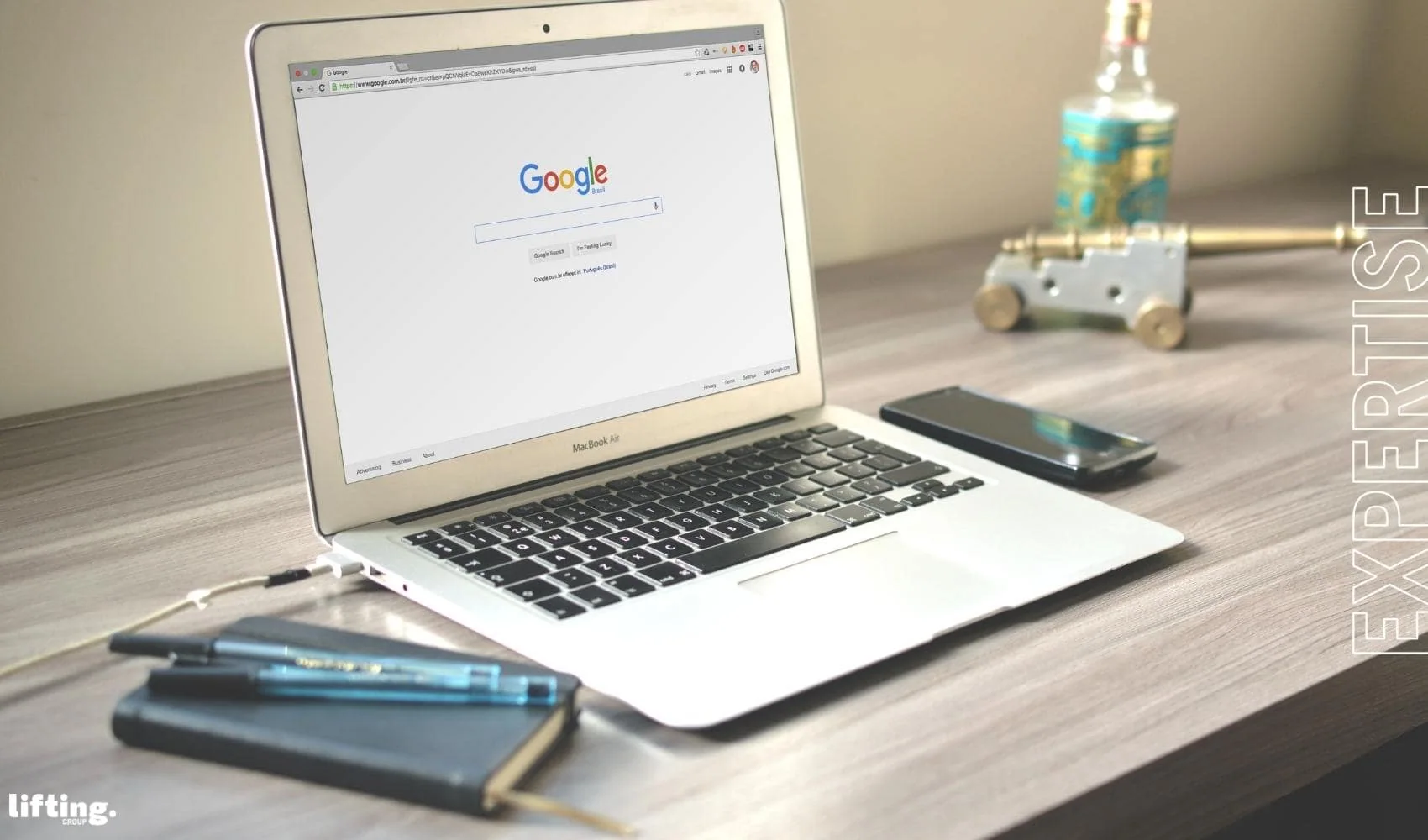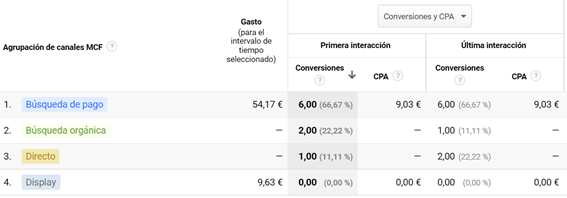Understanding which attribution model to choose can be a very complicated task, especially when we don’t exactly understand what attribution models are, how they can benefit us and what relevance they have on the future of our strategy or actions.
An attribution model is a system for assigning a value to different consumer touch points based on their importance in contributing to conversion. Or, to put it another way, it is the scheme that a given platform follows to assign the conversion value to one channel or another, when several are involved in the conversion path.
Next, we will put into context the attribution models that Google has in contrast to the attribution models of the main social networks. From here, we will comment on their influence on the results we can achieve on platforms such as Facebook, Instagram or Twitter.
GOOGLE VS. SOCIAL MEDIA ATTRIBUTION MODELS
The existing attribution models are the following:
- Last interaction: The last point of contact takes 100% of the credit for the sale.
- Last indirect click: This model ignores direct traffic, since it is assumed that if the user has typed the URL directly, it is because he/she has already decided to make a purchase before entering the website. So the credit for the sale would go to the upstream channel.
- Last Google Ads click: All the credit would go to the last click on Google Ads. This is based on the assumption that, by targeting conversions directly, Google Ads have the greatest influence on conversions. This model is of interest if we are allocating most of the budget to Google Ads and we want to calculate the ROI of this channel exclusively.
- First interaction: Here all value is attributed to the first point of contact.
- Linear: This model evenly distributes the credit for a conversion among all contributing channels.
- Weather deterioration: The contact points closer in time to the sale or conversion are considered more decisive, and will therefore be more important. The percentage of importance of each is assessed according to the time elapsed until conversion: the farther away, the less important.
- According to the position: This model assumes that the most important interactions are the first and the last. Therefore, it allocates 40% of the sale value to each of them and divides the remaining 20% among the others.
- Data-driven attribution: It uses actual data from your Analytics account to generate a customized model to determine how much each marketing touchpoint along the customer journey contributes to conversion. This feature is only available in Google Analytics 360.
How does Google do it?
Google’s two main platforms (Analytics and Ads) use different attribution models. In the case of Analytics, this platform uses an indirect last-click attribution model, i.e. it assigns the conversion to the channel where the last click occurred, unless it is direct traffic. In this case, Analytics ignores it, assigning the conversion to the previous channel. Analytics values the “multi-channel” nature of conversions, knowing that they can come in through different channels and that, for each business, one model may be a higher priority than another. That is why it offers the model comparison tool, to compare the different models and analyse the conversions according to each of them.
In the case of Google Ads, the attribution model is last click. In other words, if an interaction with an Ads ad occurred on the conversion path, the platform will be attributed the conversion (even if other channels were involved).
How do social networks do it?
Facebook’s model (and, for obvious reasons, Instagram as well) uses a similar model to Google Ads. If a Facebook ad intervenes in the customer’s path, it will be attributed to the conversion, regardless of whether the customer then directly enters and converts.
In the case of Twitter, the platform takes into consideration the models of the last interaction, the first interaction as well as the model according to the position[i]. However, when tracking a conversion, Twitter stresses that it is important to correctly define attribution intervals. This will depend on our business interests, and we can define a post-interaction attribution interval (for those conversions that occur after the user interacts); or define a post-play attribution interval (when a person sees the ad, does not interact with it at the time, but later visits the website and makes a conversion)[ii].
What would happen to the results if I use one attribution model or another?
First of all, it is important to point out that the social media attribution process will be different for each company, since each one runs different campaigns, targets different audiences, etc. Therefore, the main thing is to be clear about what we want to achieve with our campaign. What kind of objective are we setting for ourselves? Purchases, contact forms, subscriptions, content downloads…? We will then choose the attribution model that best suits us, taking into account the existing attribution models, the objectives we want to achieve with our actions and how our customers behave.
Keep in mind that a customer visits several different channels before converting. It doesn’t matter if we focus on our social networks. A customer may learn about a new promotion through Facebook, click on the ad, but not buy and, the next day, enter through the organic channel on the website and buy. If we rely on the first interaction model, attribution will be awarded to the social channel and with the results in hand we will conclude that the social channel has achieved a conversion. On the other hand, if we rely on the linear model, it tells us that all channels that have intervened will take the same credit. Let’s see all this through the following example:
“Organic traffic –> Google Ads –> Facebook Ads –> Organic Traffic –> Direct Traffic”
We have said that depending on the attribution model we choose, the results will vary and, consequently, so will the conclusions. What would happen if our model was the ultimate interaction model? We would assign the conversion to the direct channel, without taking into account that there were other channels that also played an important role in the entire lead’s journey. What would happen if we were based on the linear model? Well, credit would go to all channels equally, but are all these channels really important to us? It is possible that most of our efforts are being spent on campaign investment and, therefore, Google Ads and Facebook Ads should have a greater recognition or weight in the end.
As we have said and seen, our results will change depending on the type of model we use, and therefore our conclusions as well. The important thing is to define the weight that each channel has on the actions we carry out. If, for example, we are investing most of the money in paid campaigns, we are allocating to Facebook; it will be worth prioritizing Facebook’s attribution model, and be more mindful of the conversions that are being attributed to this channel.
The Google Analytics model comparison tool can help us a lot to check and contrast one model against another, analyse their differences and find out what would happen with the conversions we have achieved in the last month if we choose one model or choose another. For example:
This case is very simple, but it illustrates very well what we have explained. In the last month we have received 9 conversions. Based on the first interaction model, we see that 2 conversions have been assigned to organic traffic and one to direct traffic. However, if we choose the last interaction model we see that the results differ. This means that there was a lead that converted after entering directly on the website, and as we rely on the last click model, it is this channel to which is attributed the conversion (regardless of whether we encountered the same lead through the organic channel and then entered directly on our website).
Attribution models offer us the possibility of understanding the multichannel nature of marketing actions as something that must be approached with perspective, being aware that the user receives stimuli from different channels, from the moment the need arises until the conversion we are searching for is achieved. At Lifting Group, we like to work under this premise, as it offers us the possibility of planning marketing actions with greater guarantees of success, since we know the behaviour of the user better.
[i] https://business.twitter.com/es/help/overview/twitter-ads-glossary.html#:~:text=Administrador%20de%20atribuciones%C2%A0
[ii] https://business.twitter.com/es/help/campaign-measurement-and-analytics/conversion-tracking-for-websites.html#:~:text=Intervalos%20de%20atribuci%C3%B3n%3A


